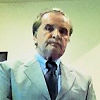
Time marches on. The world is continually renewed with new ideas, technologies, and applications. As a full participant in the economic system, the enterprise is not immune to the effects of change. In fact, a free market enterprise has a leading role in the development of ideas that drive social, political, and economic progress.
By Larry Tremmel
Evolution, however, is not linear. Progress in one-dimension produces ripples of influence that affect change within and without the enterprise. The effects of change are subsequently reflected outward, influencing others as well as the original source of the stimuli. This process is repeated continually; members of a system influence and, in turn, they are influenced. Thus, the external world and the enterprise must evolve together to assure mutually beneficial growth. Leveraging change requires awareness and sensitivity.
Internal day-to-day management responsibilities, however, can become hypnotic, making business activities appear static. When this hypnosis becomes collective, the entire enterprise can become lethargic, one that is blinded to external opportunities and threats, thus creating a downward cycle that can end with corporate suicide. How can corporations escape this cycle of doom? How can corporations learn to flourish in an environment of change? Satisfactory answers to these two questions are the key to corporate survival.
Change Strategy
Organizational change is a process, not an end. The process is difficult to initiate and even more challenging to maintain. However, some enterprises have succeeded against these formidable odds. There is one common denominator that links successful change initiatives; learning organizations have learning people. Without personal transformation, there cannot be organization transformation. Analysts emphasize this point in historical reviews of companies with sustained exceptional results.
The first step in organizational transformation is finding the right talent for change, and then ensuring that they are assigned the right organizational role that optimizes their talents. Although the focus should be placed upon senior executive talent, the principle of collecting, assessing and assigning talent should permeate through the entire organization. Talent can be imported from external organizations; corporations seeking a competitive advantage through organizational learning can invest in long-term strategic staff training, or some hybrid of the two approaches can be pursued to yield the desired results.
Training for knowledge work is distinctly different from technical training. In the latter case, training activities attempt to transfer specific competencies to the learner. A software programmer learns a new language. An accountant learns a new application for a costing system. A proposal team dissects a project into manageable tasks. Knowledge work, on the other hand, requires intellectual, emotional and spiritual development. It is the transference of skills for personal, and at the team level, transpersonal growth. Knowledge training is open-ended; the mastered skills do not lead to a knowledge diploma, but to powerful insight. The insight, once mastered, allows the practitioner to see the world anew. Opposites are seen as complements, like the two sides of coin. Mental illusions derived from linear language dissolve; what remains are organic systems in balance.
Changing these organic systems require the subtle application of leverage. Understanding systems and their leverage points is a product of insight and practice, a discipline of systems thinking. At the team and organizational level, personal insight becomes collective insight. The group learns to view the environment from common vantages above the ground level. Shared insight can lead to shared values and vision. A shared vision creates the energy necessary to drive collective transformational learning. The result: missionaries, not bureaucrats, drive missions. The committed, not the conforming, drive innovation.
Leadership comprises another people component. For leadership is a key factor in organizational change. However, effective leadership must be balanced with effective management. Leadership without management will create vision without results. And on the other hand, great management without leadership is a well-maintained ship that sails without navigation. Leadership is responsible for essential transformational activities. The leadership coalition must discover and identify corporate values and transform those values into a collective vision of success. For the shared vision drives the strategy. These activities set organizational direction and establish the clear perimeters for team experimentation and learning.
Another factor is urgency. A sense of urgency must be permeated throughout the enterprise. When urgency is effectively communicated, resources can be marshaled rapidly. In short, urgency defines the necessary speed for change. Moreover, change leadership requires exceptional communication skills. Both the direction and velocity of change must be communicated—regularly and frequently. Effectively satisfying these leadership challenges creates a firm foundation for organizational change.
It is at this point in time that managerial expertise helps build up the momentum for change. Savvy project managers can prioritize change initiatives to create short-term successes. These short-term successes can help build both board, and rank and file confidence in the change process, and thus undermine the inherent bureaucratic resistance to change within the enterprise. Management must also review current organizational structures to ensure that enterprise information, financial, and human resource systems and policies are aligned with new direction and tempo of transformational activities.
Proper structural alignment reinforces the effectiveness of change activities; it builds additional momentum by garnering increased compliance and commitment. Information systems should become more accessible and transparent. Compensation systems should reward the committed. Financial metrics should be supplemented with balanced scorecard metrics to catch the softer results from increased customer satisfaction, improved process efficiency and an expanded knowledge capital base.
Kick-offs for organizational change programs must demonstrate a sense of urgency. Removing entrenched bureaucrats always grabs the attention of members of the enterprise. A second prerequisite task is assessment; this activity includes a review of executive staff, financials and operations. In evaluating executive staff, commitment to change should be a primary factor in the evaluation. Those executives who appear too passive to change or too aggressive in their own agenda, must be summarily removed and found new organizational seats without negative influence upon the organizational goals. From the remainder, a guiding coalition must be created.
Leveraging the skills and knowledge of the coalition, a corporate vision and a subsequent corporate strategy must be created to actualize the vision. These steps set the table for change. The coalition’s next task is communication. The team must become emissaries for change. Special attention must be focused upon organizational principals, top customers and critical suppliers. These communication tasks can be delegated to trusted team members, change leadership need only get involved when strong resistance is discerned. To increase commitment, focus upon a few short-term victories. Improved financial metrics is the barometer for success, expect positive improvement. If not, retrace your steps and look for poor execution or omissions.
Creating a change environment remains one of the most difficult challenges any organization can face, however, strong leadership can create the momentum necessary for successful transformation.
If you’re building a team and you have positions you can’t fill, you need to use SMA Talent on Demand (TOD®)! With TOD®, you can find experienced talent, such as Larry, matched to your exact needs:
